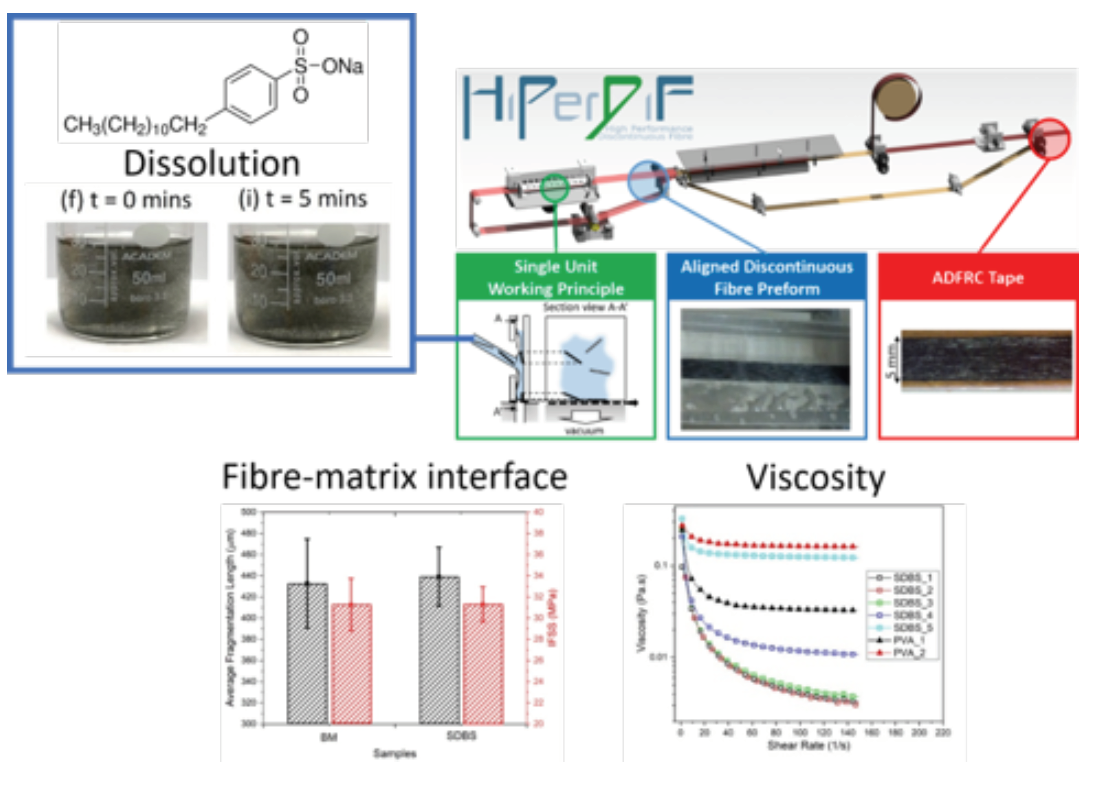In order to increase the material throughput of aligned discontinuous fibre composites using technologies such as HiPerDiF, stability of the fibres in an aqueous solution needs to be achieved. Subsequently, a range of surfactants, typically employed to disperse carbon-based materials, have been assessed to determine the most appropriate for use in this regard. The optimum stability of the discontinuous fibres was observed when using the anionic surfactant, sodium dodecylbenzene sulfonate, which was superior to a range of other non-ionic and anionic surfactants and single-fibre fragmentation demonstrated that the employment of sodium dodecylbenzene sulfonate did not effect on the interfacial adhesion between fibres. The use of rheometry was used to complement the study to understand the potential mechanisms of the improved stability of discontinuous fibres in aqueous suspension and it led to the understanding that the increased viscosity was a significant factor. For the shear rates employed, fibre deformation was neither expected nor observed.

